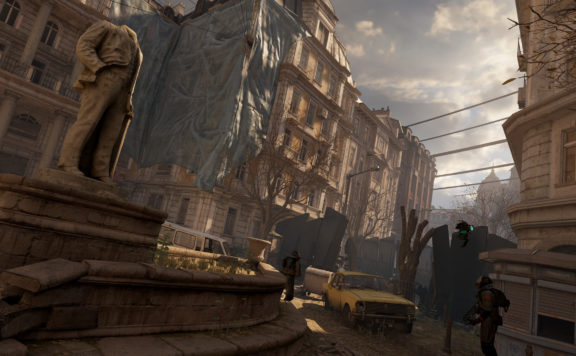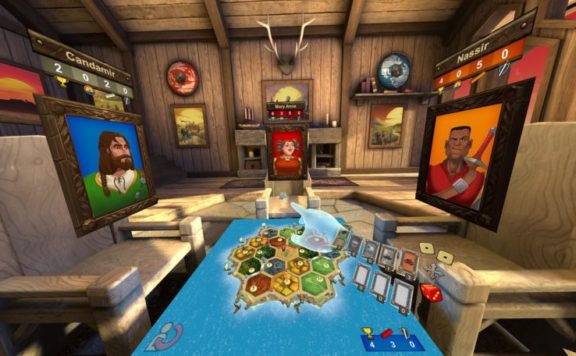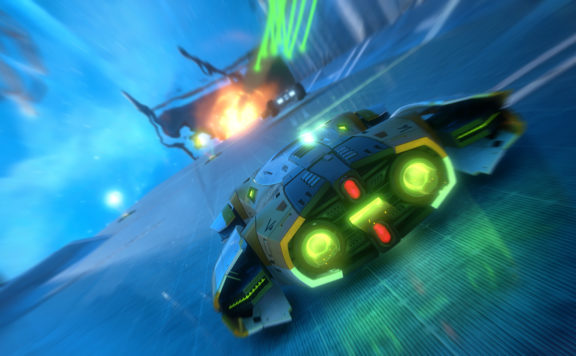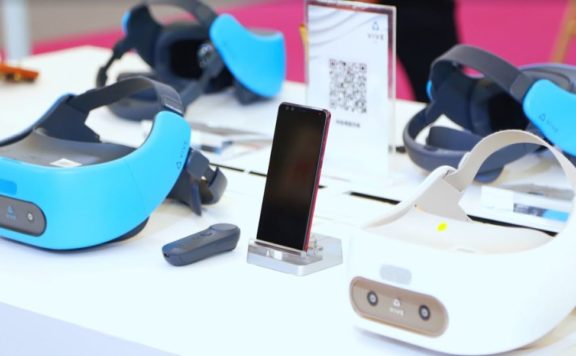I have always been a fan of anything related to Star Trek, so a VR game of the name immediately caught my attention. The fact that it’s everything I had expected Star Trek Online to be once upon a time added a lot of emotional texture to the experience. For those paying attention to the industry all those years ago, early concepts for STO seemed to suggest that players might take on individual roles in running starships. Obviously, that idea morphed into the different, though certainly still interesting, MMO that was eventually released.
Then, we got a small indie project called Artemis Spaceship Bridge Simulator that really did a lot to define the concept of a new co-op ship genre. Many of the Artemis mechanics and concepts made their way into Star Citizen design documents, and are now very clearly being used in STBC. The difference is that Star Trek: Bridge Crew is strictly a VR experience, and to borrow from a former helmsman… Oh, my.
Worth Playing
If you have a VR system, this game is definitely worth playing. I played it with the gamepad controller, and while it was very functional and operated cleanly, the Oculus Touch just stood out as a particularly incredible experience. Bridge controls are designed well and spatially configured to allow for great visibility and virtual access. I never really found myself trying to hit one button, and hitting another by mistake, except that I once declared a red alert while using the gamepad because you can hit in-game buttons while not even looking somewhere else if you’re not careful.

They call it the Aegis, but it plays a lot like the Artemis…
Visually, I thought a lot of really smart art-design choices made for a really great experience. As much as I detest the use of lens flare in games sometimes, and in movies all the time (Do you hear me, Abrams? ALL the time.), it worked really well in STBC. Lens flare and a bit of bloom helped to overcome the slightly substandard graphics you experience from VR. It worked well enough that this might be the first VR game I’ve played that created absolutely no sense of vertigo or nausea. Of course, the game taking place inside a stationary starship bridge obviously helped by limiting moving objects, too.
I was additionally impressed with how well the various roles had been fleshed out in the initial game design, creating a definite need for each bridge station. While you can have AI filling those slots and being ordered by the captain, they don’t hold a candle to a competent player in the same seat. More importantly, the bridge stations are actually fun to play. In fact, I think they were more fun than being in the captain’s chair, and through several multiplayer games, I never saw any arguments over who got which station. They’re all pretty interesting.
Updates Needed
As big a step forward for the industry as STBC is, I think it still may have been released a little early and there are definitely some improvements that need to be made. For instance, while there are a number of interesting missions to run in either a storyline order or in a randomly selected mode, those missions are limited. They’re also designed and staged, rather than being dynamically generated in any way.
The lack of dynamically generated content is definitely going to impact the long-term viability of Star Trek: Bridge Crew. Randomizing the missions that are there is a good start, but once you played a specific mission, there’s no mystery or surprise when you get it again later. There’s also no reason to engage in combat or complete any mission on a meta-scale.

They didn’t believe in labels or even context in TOS. It’s cool, but it’s also a challenge to fly the old girl.
A bigger picture to the game is the second thing that needs to be added to make STBC a more worthwhile game. The storyline missions develop an interesting scenario pitting the Klingons against the Federation, but then there’s no reaching change past those individual missions. Borders moving, changes in fleet readiness, and other nods to character impact on the larger universe would go a long way towards adding meaning to player actions in individual missions.
Probably the biggest opportunity for improvement would be some form of PvP, which also suggests adding additional player-ships and races to the game. PvP by definition is dynamic, and creating opportunities for multiple player-ship engagements would immediately create massive re-playability in an otherwise run-and-done game. Space-based missions using WWII submarine warfare concepts would be a great way to introduce Klingon ships to the game, and give PvP purpose.
Lastly, I don’t think this game needs to be limited to VR. TrackIR and gamepads would make it just as playable in 2D, as it is in 3D. Limiting the game to VR creates an artificial limitation in the number of available players that I think was fairly short-sighted. Just as you don’t really need a joystick to play a flight sim or Elite Dangerous (though it obviously helps a lot), you shouldn’t need VR gear to play STBC.
Looking Forward
If they do nothing else to improve the game, Star Trek: Bridge Crew has demonstrated the immediate viability of VR in co-op simulators. I’d be shocked if we don’t see something similar for multi-crewed air combat simulators down the road, and I can especially see something like a co-op Silent Hunter getting a lot of benefit from the VR treatment eventually.
That said, I still can’t see the VR peripheral market making a big breakout any time soon. It could happen, but with the amount of development time and effort needed to create a game like this, with the relatively miniscule market share VR makes up of video game buyers, it doesn’t seem like a great business move to build a game that’s only playable with VR peripherials.

STBC is definitely a step forward in what is likely to be a really cool new genre: co-op bridge simulators
Hopefully now that the platform exists, Ubisoft will be able to leverage those same assets to generate additional content more quickly, but otherwise this game probably won’t last long as it stands. If we see a company popup with an engine that makes development easier for companies, the novelty and fun-factor of VR sims could easily make the genre more profitable, though. Unfortunately, it’s likely just one of those situations where several will have to try and fail before someone figures it out.
As to whether or not to buy the game, this one is a rather hard question to answer. I don’t think the game is worth the price right now, and would suggest holding off for a Steam sale under most circumstances. In this case, the limited player-base means your chances of playing this online get smaller by the day, though. Unless Ubi opens the game up to play sans-VR, there’s unlikely to be any online players by the time the game is worth its price through either updated content or a sale.
In the end, it’s a great demonstration of where VR tech currently is, and a solid promise of interesting games to come. Due to lack of content and unnecessarily restricted player-base, Star Trek: Bridge Crew isn’t much more than a really well done tech demo currently. I do have to say that it is a really, really, cool tech demo, though.








